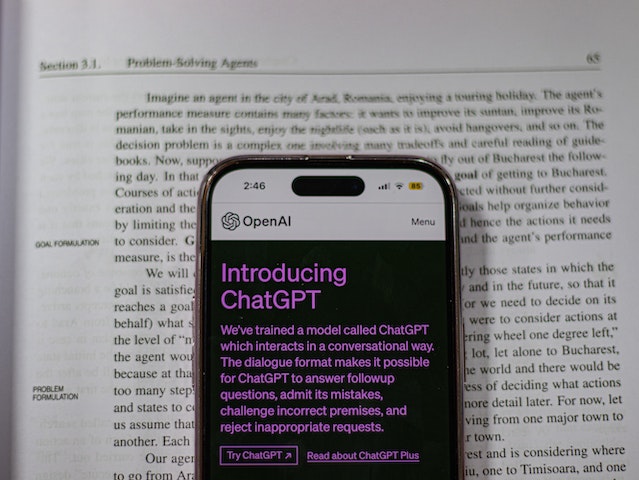Few issues in education generate more controversy than generative artificial intelligence (AI). Generative AI includes ChatBot tutors and programs like ChatGPT. On one hand, Generative AI tools can help overloaded teachers develop quizzes, study guides, summaries, and other course materials. On the other hand, generative AI apps can hinder student learning. This is particularly true of ChatGPT, which students can use to generate essays and homework answers. Additionally, this leads to questions about plagiarism and about academic integrity. Moreover, many experts worry that the use of generative AI may widen the already-broad digital divide, amplifying economic disparity in education. One thing, however, is clear: it’s essential for educators and administrators to understand the risks and benefits of generative AI in education.
The Risks of Generative AI in Education
Brett Henebery of The Educator: Australia spoke with Jim Webber, chief scientist for Neo4j, an analytics and graph database company. Webber discussed the risks and benefits of generative AI in education, focusing on Large Language Models, or LLMs, like ChatGPT. The main risk of LLMS, according to Webber, is to the “level of independence” at which students are expected to work. With LLMs, Webber states, students can “seemingly complete an assignment with very little effort.” This in turn “leaves no room for the student to interpret and understand,” endangering a student’s ability to develop crucial critical thinking skills. To mitigate these risks, Webber mentions that educators need to become more vigilant about writing style. By noticing alterations in writing style, a teacher may be able to tell if student work is in fact created by AI. However, Webber notes that this may be a losing game, as students can ask LLMs to write in a particular style.
The Benefits of Generative AI in Education
Webber does, however, say that “LLMs have a lot of promise to help educators.” In terms of benefits, Webber mentions LLMs’ ability to mimic style. Because of this, LLMs may provide educators with “fresh examples of particular styles of prose or poetry” that better appeal to students. Moreover, according to Webber, LLMs may help “ students with communication difficulties or working in a second language.” With training, the students could use generative AI like a tutor in order to “improve their own reasoning and writing skills.”
LearnSafe Benefits Student Learning
The risks and benefits of generative AI in education are still emerging. However, other technological tools have already proven to be beneficial for K-12 students. When installed on school computers, screen monitoring software, like LearnSafe, protects students from harm. This includes the risk of inappropriate responses from generative AI. With ChatGPT and other LLMs, this is important, as the apps’ filters don’t always catch inappropriate content. LearnSafe works hand-in-hand with content filters on school computers to ensure student safety.


